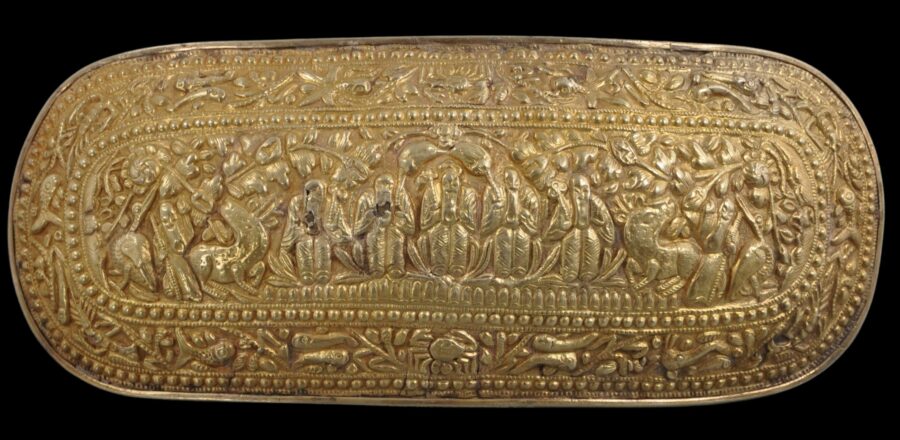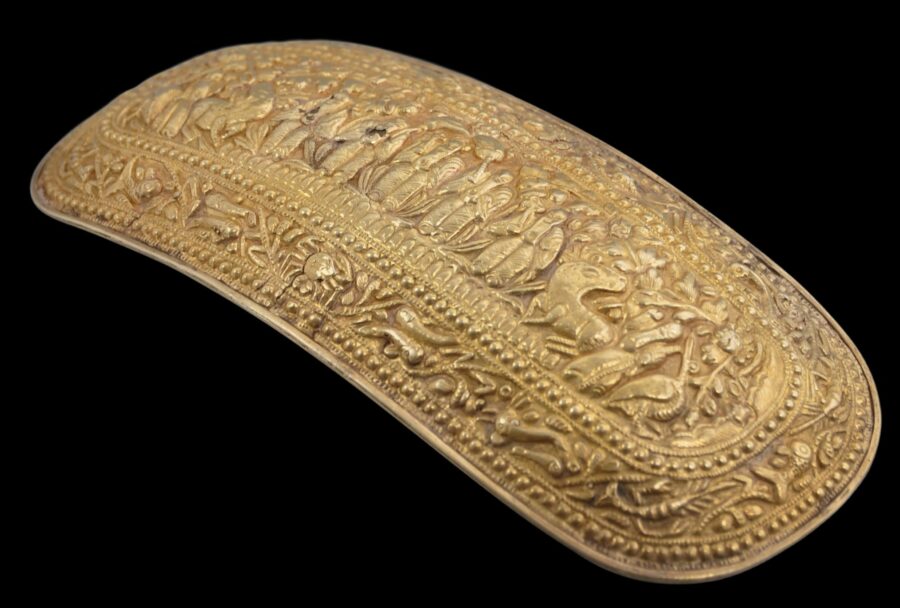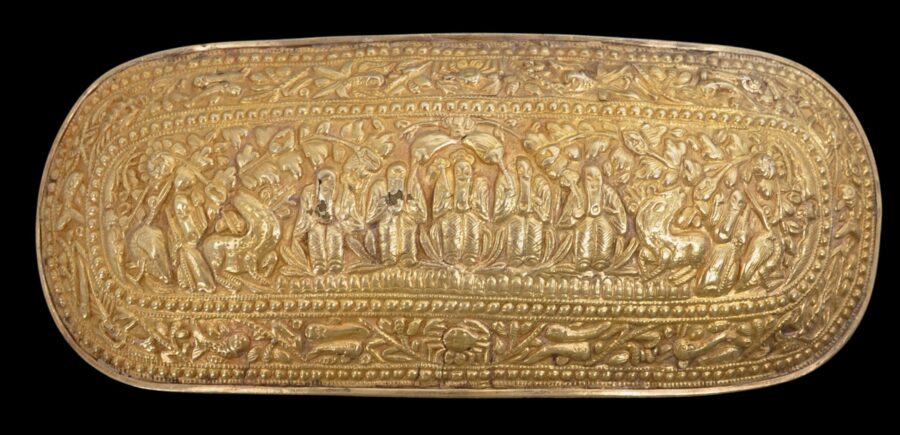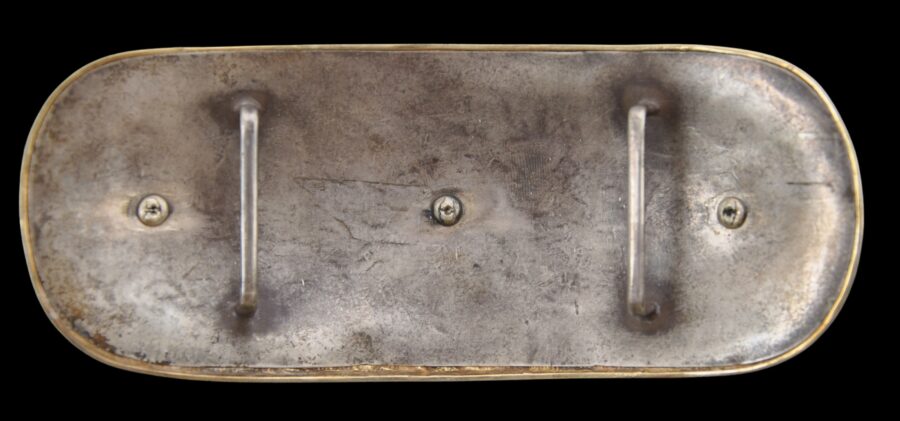Enquiry about object: 7959
Indonesian Peranakan Chinese Gold Wedding Buckle
Peranakan Chinese Community, Makassar, Sulawesi, Eastern Indonesia 19th century
width: 15.9cm, height: 6.7cm, weight: 116g
Provenance
private collection, London, UK.
This buckle is from the peranakan or localised Chinese community of Makassar (Ujung Pandang) in south Sulawesi, a large island in Eastern Indonesia. It comprises a high-carat gold sheet fixed via three screws to a silver substrate. It is of convex for, and is rectangular with rounded corners.
It is decorated with the Sanxing deities – Shou, Fu and Lu – three gods associated with fortune, prosperity and longevity and representative of three celestial bodies. They are most particularly associated with Daoism, the system of beliefs and deities that was grafted onto Buddhism in southern China and which was (and still is) popular among the Chinese of Southeast Asia who ancestrally are largely from southern China.
Shou, Fu and Lu are shown with other retainers and deer, all within a border of decorated with crabs, lobsters and fish. The presence of sea creatures is suggestive of prosperity but also reflects the linkage that Southeast Asia’s localised Chinese communities had with trade and seafaring.
The buckle would have been on a cloth waist belt in conjunction with a wedding. The practice of wearing such buckles is not traditionally Chinese but was picked up from the local Islamic Bugis and Malay communities, and so is part of the creolised traditions of the localised or peranakan Chinese.
The buckle here has some rubbing to the surface of the gold and so some minor loss, but largely is in fine condition.
References
Backman, M., Malay Silver and Gold: Courtly Splendour from Indonesia, Malaysia, Singapore, Brunei and Thailand, River Books, 2024.
Chin, E., Gilding the Phoenix: The Straits Chinese and their Jewellery, The National Museum Singapore, 1991.
Ho, W.M., Straits Chinese Silver: A Collector’s Guide, Times International, 1984.





